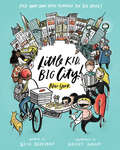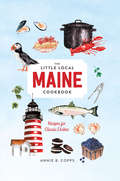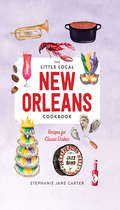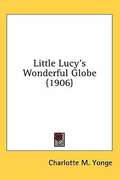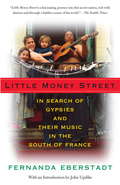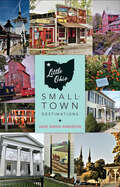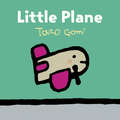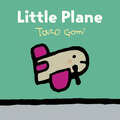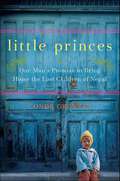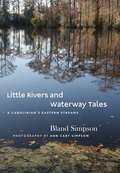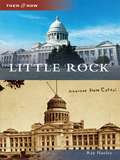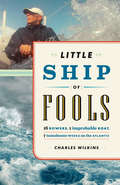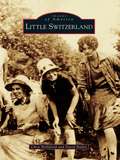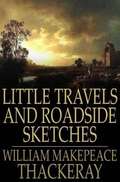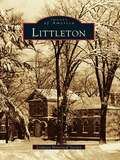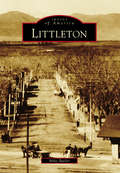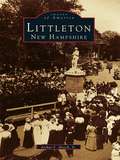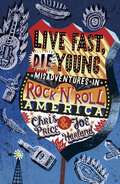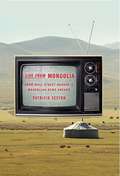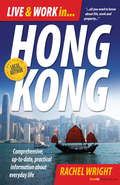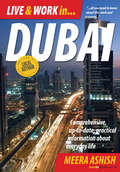- Table View
- List View
Little Kid, Big City!: New York (Little Kid, Big City #1)
by Beth BeckmanIf you could have an adventure in New York City, where would you go? Curious readers will find plenty to see, learn, and explore in this fun and illustrated pick-your-own-path travel guide!Would you walk the Brooklyn Bridge for a huge slice of pizza, see the dazzling lights in Times Square, or visit the whale at the Museum of Natural History? Create your own itinerary, choose which places to visit at the end of every page, and follow along with an adventurous family as they explore New York. • Visit iconic sites like the Statue of Liberty, the Empire State Building, and the legendary Broadway theater district. • Grab a slice from New York's iconic pizzerias, sample world-famous bagels, and try a taste of Harlem Soul food. • Discover off-the-beaten-path destinations such as the Little Red Lighthouse, the Underground Transit Museum, and the Boardwalk of Coney Island. • Travel through the city that never sleeps by waterway ferry, subway and the iconic yellow taxi. • Get to know the diversity of the city through visits to Chinatown, Little Italy, Queens, and Harlem. Featuring playful illustrations, a diverse and lovable cast of characters, an invaluable resources section, and a fun foldout map, this book is an ingenious way for kids to take the lead while planning a vacation or learning about one of the largest cities in the world. Whether you&’re an armchair traveler or a real-life tourist, Little Kid, Big City! has everything you need to invent your own adventure!Next stop, Little Kid, Big City!: London
Little Local Maine Cookbook
by Annie Copps30 classic Maine recipes to treasure. The Little Local Maine Cookbook brings the essential flavors of Maine to your table. From lobster boils, rolls, and bakes; whole roasted fish with fresh farm-stand corn; and blueberry-sauced crepes and homemade pie, this book includes traditional recipes that celebrate the state. Written by a regional food expert and beautifully illustrated, this little cookbook is the perfect gift for Mainers and tourists alike.
Little Local New Orleans Cookbook
by Stephanie CarterThe Little Local New Orleans Cookbook brings the essential flavors of New Orleans to your table. From festive cocktails and finger foods to big celebration fare, you’ll find recipes for Sazerac and Hurricane cocktails, Creole gumbo, jambalaya, blackened redfish, king cake, sweet pralines, and other traditional dishes. Written by a regional food expert and beautifully illustrated, this little cookbook is the perfect keepsake for the Big Easy.
Little Local Portland Cookbook
by Danielle Centoni30 classic Portland recipes to treasure The Little Local Portland Cookbook brings the essential flavors of Portland, Oregon, to your table. From special coffee drinks and brunch dishes like Huckleberry Hotcakes and Salmon Hash, to delicious Oregon Bay shrimp cocktail, skirt steak with pinot sauce, and Dungeness crab cippino, you’ll find recipes for iconic Portland dishes for every meal. Written by a regional food expert and beautifully illustrated, this little cookbook is the perfect souvenir.
Little Local Texas Cookbook
by Hilah Johnson30 classic Texas recipes to treasure The Little Local Texas Cookbook brings the essential flavors of Texas to your table. From traditional BBQ to celebratory party treats, you’ll find recipes for slow-roasted beef ribs, chicken-fried steak, chili cheese enchilada breakfast tacos, Texas sheet cake, and other classic dishes. Written by a regional food expert and beautifully illustrated, this little cookbook is the perfect gift for Texans and tourists alike.
Little Money Street: In Search of Gypsies and Their Music in the South of France
by Fernanda EberstadtIn 1998, Fernanda Eberstadt, her husband, and their two small children moved from New York to an area outside Perpignan, France -- a city with one of the largest Gypsy populations in Western Europe. Here she found a jealously guarded culture, a society made, in part, of lawlessness and defiance of non-Gypsy norms; and she met MoÏse Espinas, the lead singer of the Gypsy band, Tekameli. As her relationship with the Espinas family developed over the years, progressing from mutual bafflement to a deep-rooted friendship, Eberstadt found herself a part of the captivating Gypsy life-a life rich with tradition and culture, but slowly being consumed by the modern world.From the Trade Paperback edition.
Little Ohio: Small-Town Destinations
by Jane Simon AmmesonWhere can you travel the Erie Canal on a boat pulled by a horse? What is Wapakoneta, and what does it have to do with Neil Armstrong? Where can you eat ice cream at a stop on the Underground Railroad? Find these answers and more in Little Ohio: Small-Town Destinations. Author and blogger Jane Simon Ammeson traveled across the state to discover where to eat, stay, play, and shop in more than 90 charming small towns. Organized by region, Little Ohio offers fellow road trippers an easy-to-use guide of must-see attractions. Full-color images showcase unmissable museums, quaint Main Streets, historic sites, and more.From wineries to chocolate shops, old mills to Amish villages, riverboats to covered bridges, Little Ohio has everything you need for a day, weekend, or week full of fun. No matter where you are in the Buckeye State, there's always something to explore!
Little Plane
by Taro GomiLittle Plane is learning to fly! When you're small and on the go, there's a lot to watch out for: tall trees, muddy hills, and more! With wings aloft, Little Plane keeps flying, weathering the bumps along the way with his initiative, confidence, and positive attitude. This colorful follow-up to Little Boat and Little Truck by beloved author-illustrator Taro Gomi is a must for toddlers launching upward to big adventures!
Little Plane
by Taro GomiLittle Plane is learning to fly—and reaching for the sky—in this inspiring adventure for toddlers! When you&’re small and on the go, there&’s a lot to watch out for: tall trees, muddy hills, and more! With wings aloft, Little Plane keeps flying, weathering the bumps along the way with his initiative, confidence, and positive attitude. This colorful follow-up to Little Boat and Little Truck by beloved, award-winning author-illustrator Taro Gomi is a must for toddlers launching upward to big adventures! &“I don&’t just recommend this new book but ALL of his books—they&’re kid-friendly wonderfulness.&” —Imagination Soup
Little Princes: One Man's Promise to Bring Home the Lost Children of Nepal
by Conor GrennanA young man embarks on a life-threatening mission to reunite Nepalese children with their families in this New York Times–bestselling memoir.In search of adventure, twenty-nine-year-old Conor Grennan embarked on a yearlong journey around the globe, beginning with a three-month stint volunteering at an orphanage in civil war-torn Nepal. But a shocking truth would forever change his life: these rambunctious, resilient children were not orphans at all but had been taken from their families by child traffickers who falsely promised to keep them safe from war before abandoning them in the teeming chaos of Kathmandu. For Conor, what started as a footloose ramble became a dangerous, dedicated mission to unite youngsters he had grown to love with the parents they had been stolen from. In Little Princes, Conor recounts a breathtaking adventure through the treacherous Nepalese mountains to bring the children home.
Little Rivers and Waterway Tales
by Bland Simpson Ann Cary SimpsonBland Simpson regales us with new tales of coastal North Carolina's "water-loving land," revealing how its creeks, streams, and rivers shape the region's geography as well as its culture. Drawing on deep family ties and coastal travels, Simpson and wife and collaborator Ann Cary Simpson tell the stories of those who have lived and worked in this country, chronicling both a distinct environment and a way of life. Whether rhapsodizing about learning to sail on the Pasquotank River or eating oysters on Ocracoke, he introduces readers to the people and communities along the watery web of myriad "little rivers" that define North Carolina's sound country as it meets the Atlantic.With nearly sixty of Ann Simpson's photographs, Little Rivers joins the Simpsons' two previous works, Into the Sound Country and The Inner Islands, in offering a rich narrative and visual document of eastern North Carolina's particular beauty. Urging readers to take note of the poetry in "every rivulet and rill, every creek, crick, branch, run, stream, prong, fork, river, pocosin, swamp, basin, estuary, cove, bay, and sound," the Simpsons show how the coastal plain's river systems are in many ways the region's heart and soul.
Little Rock: A Postcard History (Then and Now)
by Ray HanleyLittle Rock is small by capital-city standards, but much like larger capitals, it has been quick to demolish the old in favor of the new. There are still striking structures tucked away here and there, and to appreciate how Little Rock has evolved from sleepy, steamboat days to a booming tourist destination, Arcadia Publishing presents photographs from past and present.
Little Ship of Fools
by Charles WilkinsThe dramatic and hilarious story of sores and survival on a human-powered journey across the ocean.It was to be an expedition like no other—a run across the Atlantic from Morocco to Barbados aboard an experimental rowboat. There would be no support vessel, no stored water, no sails, no motor. The boat's crew of sixteen included several veterans of U.S. college rowing, a number of triathletes, a woman who had rowed both the Atlantic and Indian Oceans, and a scrawny, bespectacled sexagenarian -- our chronicler, Charles Wilkins.When he joined the expedition, Wilkins had never swung an oar in earnest. In a tale both harrowing and hilarious, Wilkins takes the reader along for seven weeks of rationed food, festering sores, breathtaking sunrises, sleep deprivation, and mile-high waves alongside a devoted crew of misadventurers.Little Ship of Fools is a fascinating and funny story of courage, adventure and human spirit
Little Switzerland (Images of America)
by David Biddix Chris HollifieldThis is the place. As Heriot Clarkson sat on his mule atop Grassy Mountain in June 1909, he looked out over a sea of mountains extending to the horizon in every direction, his dreams before him. Here was the spot for a retreat from the summer heat of the piedmont and coastal plain where simple living and nature's beauty would combine to create an idyllic community. But the story doesn't begin there. Hardy Scotch-Irish settlers moved into these same mountains some two centuries earlier, admiring the same views and putting down permanent roots. Images of America: Little Switzerland documents the unique interactions between native and summer residents in working together to build this remarkable community. The social, economic, historical, and spiritual fabric that makes Little Switzerland unique among resort communities is presented, along with the personalities and places that provide its character.
Little Travels and Roadside Sketches
by William Makepeace ThackerayThough William Makepeace Thackeray eventually gained fame for picaresque and satirical novels such as Vanity Fair and The Luck of Barry Lyndon, he was also a prolific travel writer and essayist. This collection presents an array of Thackeray's most beloved travel essays and observations.
Littleton
by Littleton Historical SocietyIncorporated in 1714, Littleton began as a typical New England farming town. While it enjoyed modest growth through the early years, it was not until after World War II that the population began its steady climb. Two major highways, Route 2 in the 1950s and Interstate 495 in the 1960s, cut through the town, and Littleton became an attractive bedroom community with convenient access to the expanding technological industry of Massachusetts. The population rose from 1,447 in 1930 to approximately 6,300 in 1970, and industry began to overtake the dairy farms and apple orchards. Still, the impression of a rural setting, the open space, and an intangible quality of life contribute to the small-town character for which Littleton is celebrated.Through vintage photographs, many never before published, Littleton connects the current generations with the town's past. Vintage photographs of homes that have changed in appearance or have been destroyed for expansion recall a time of farmhouses and open fields. The book also follows the growth of Littleton, including the emergence of the Conant-Houghton Company and the depot area, as well as the Long Lake and Lake Warren resorts.
Littleton
by Mike ButlerIn 1858, gold was discovered where Little Dry Creek joins the South Platte River, four miles north of what is today Littleton. After the initial rush of gold-seekers, agriculture sustained growth when the gold deposits played out. In 1861, Richard S. Little filed claims for agricultural land along the South Platte River in what would become Littleton. Little was not only a farmer but a land developer, and he filed his plat at the Arapahoe County Courthouse in 1872 for streets and homes on his property. When the Denver & Rio Grande Railroad built south from Denver through Littleton in 1871, development soon followed, and Little had no shortage of buyers for his plots of land. Thus began Littleton, and over the years of boom and bust, this early settlement has transitioned from village to county seat to one of Denver's finest suburbs.
Littleton, New Hampshire (Images of America)
by Arthur F. March Jr.Littleton, New Hampshire, is listed number eleven in Norman Crampton's One Hundred Best Small Towns in America, and it does indeed have a great deal to offer. Situated between two major rivers in the heart of the White Mountains, it was incorporated in 1784 but it wasn't until the nineteenth century that the incredibly striking natural beauty of the surrounding area was discovered by the outside world.With the development of photography in the mid-nineteenth century the grandeur of Littleton's mountain scenery soon began to attract photographers to the area, and their images of the mirror-like lakes, winding rivers, dense, dark forests, and craggy mountains began a tourist boom that continues to this day.
Live Fast, Die Young: Misadventures in Rock And Roll America
by Chris Price Joe HarlandDisappointed to learn that Hotel California isn’t actually in the phone book, radio producers Chris and Joe resolve to seek out the true spirit of rock and roll America. Roof down and stereo up, they drive coast to coast on a mission to ‘live the music’. It’s a tale of friendship tested to the limit, great melodies, and noble myths.
Live Fast, Die Young: Misadventures in Rock And Roll America
by Chris Price Joe HarlandDisappointed to learn that Hotel California isn’t actually in the phone book, radio producers Chris and Joe resolve to seek out the true spirit of rock and roll America. Roof down and stereo up, they drive coast to coast on a mission to ‘live the music’. It’s a tale of friendship tested to the limit, great melodies, and noble myths.
Live From Mongolia: From Wall Street Banker to Mongolian News Anchor
by Patricia SextonIn 2006, author Patricia Sexton set out on a journey most of us have only fantasized about. She quit her job to pursue her dream. Thirty years old and a rising star at a Wall Street investment bank, Patricia wanted nothing more than to work as a foreign correspondent. So, that's just what she did, moving to Mongolia after landing an internship at the country's national TV station. Live from Mongolia follows Patricia's unlikely journey from Wall Street to Ulan Bator. Not only does Patricia manage to get promoted to anchor of the Mongolian news, she also meets some unusual people following unusual dreams of their own. There's the Mongolian hip-hop star who worked in London restaurants to make his dream come true or the French corporate exec now tracking endangered horses in the steppe. All this whilePatricia is living with Mongolian Mormons, camping with nomads in the Gobi desert, and even crashing Genghis Khan's 800th anniversary party. But of course Patricia has her fair share of stumbles, including a brief return to Wall Street--even after meeting with the president of CNN. Live from Mongolia is the story of this ongoing journey--from a corporate career to a dream job Patricia hadn't even imagined she would land.
Live and Work In Hong Kong: Comprehensive, Up-to-date, Practical Information About Everyday Life
by Rachel WrightWhatever your reasons for planning to live and work in Hong Kong, this comprehensive guide will tell you all you need to know to make the most of your time in this vibrant and challenging city. Organised into three sections: Living, Working, and Leisure, this book includes up to date information and well-informed opinion on: * The kind of lifestyle you can expect to enjoy in Hong Kong * The cost of living * Finding accommodation, whether short term or to buy or rent *Having and raising children in Hong Kong *Shopping for food or luxuries - Working and volunteering *Teaching English *Sporting events, special interest groups and the local arts scene *Travelling and places to visit *Entertainment and nightlife
Live and Work In Hong Kong: Comprehensive, up-to-date, practical information about everyday life
by Dr Rachel WrightWhatever your reasons for planning to live and work in Hong Kong, this comprehensive guide will tell you all you need to know to make the most of your time in this vibrant and challenging city. Organised into three sections: Living, Working, and Leisure, this book includes up to date information and well-informed opinion on: * The kind of lifestyle you can expect to enjoy in Hong Kong * The cost of living * Finding accommodation, whether short term or to buy or rent *Having and raising children in Hong Kong *Shopping for food or luxuries - Working and volunteering *Teaching English *Sporting events, special interest groups and the local arts scene *Travelling and places to visit *Entertainment and nightlife
Live and Work in Dubai: Comprehensive, Up-to-date, Practical Information About Everyday Life
by Ashish MeeraOstentatious, glam, materialistic, and tax free, Dubai is one of the most popular overseas locations for expatriate professionals. But although Dubai's population is made up of 75% expats compared to 25% locals, there is still an old town, away from the artificial world of glass skyscrapers shooting up towards the sky. The souks, the heart of urban Arabia, boast windows brimming with gold, rows of spices and nuts and fruits, pashminas and a dizzying variety of perfumes. As you set off on your journey to inimitable Dubai, this easy-to-use book offers advice on everything - from how to prepare before leaving; areas to live; how to find a job; understanding the property market; selecting schools; and the legal system. - Overview of Dubai: a general overview of history, climate, culture and economy - Living in Dubai: offers advice on driving licences, opening a bank account, finding accommodation, how to get around, the education system and schools, hospitals, understanding of the legal system, and how to get connected - Working in Dubai: provides an understanding of the job market, its conditions, and how to find a job in Dubai - Leisure in Dubai: looks into shopping, food and dining, outdoor activities, how to keep fit, clubs, and short weekend trips
